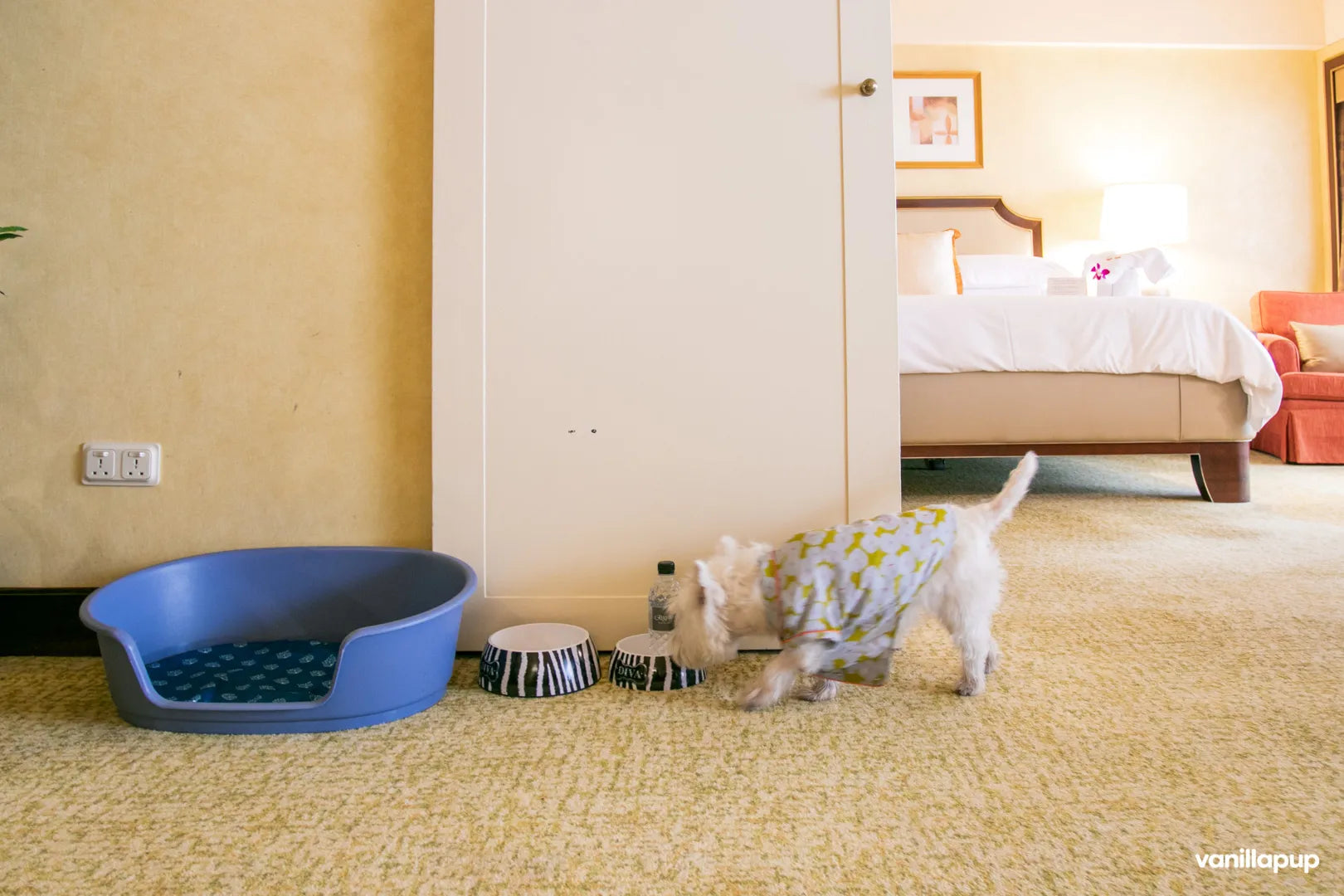We get a lot of emails and messages from people who are keen on getting pet insurance for their dogs. The common questions are "What's the difference between the different pet insurance offerings in the market?", "Which pet insurance is the best?", "Does pet insurance cover this and that?", and "Should I buy insurance for my dog?"
The truth is, we can't tell you which insurance plan is best for you and your dog. That's because everyone's situation and budget are different. So, instead, we hope that this guide will help you make a better decision.
Why buy pet insurance?
Our pets can get sick or injured, and treatments can sometimes cost a lot of money. Even if your dog is healthy, she may get into trouble now and then, such as swallowing a foreign object.
The main purpose of a pet insurance plan is to help you pay for the big medical bills.
With help to shoulder eligible medical expenses:
-
Your pet gets timely treatment because you can afford it
-
You may be able to seek better quality healthcare for your pet
-
You can focus on being there for your pet and not worry too much about the bills
Pet insurers in Singapore (as of 2023)
The first pet insurer in Singapore was Liberty Insurance, with PetCare in 2014. Since then, a few more companies joined, giving us more choices when it comes to protecting us and our precious pets from unforeseen events. The three insurance plans below only cater to dogs and cats.
The types of pet insurance coverage
In Singapore, you can find the following types of coverage:
-
Accidental death & injury
-
Non-surgery-related treatment
-
Surgery-related treatment
-
Room and board fees
-
Post-surgery treatment
-
Specific diseases, such as cancer treatment
-
Third-party liability
-
Theft
-
Final expenses
Overseas, some insurance may also cover:
-
Overseas travel medical expenses
-
Dental treatment due to accident and/or illness
-
Missing pet advertising fees
Know your needs
Your priority is to protect your savings from unexpected big bills. So, you will have to think about where those bills may likely come from. I know, if it's going to be unexpected, how can you anticipate it?
While we can't be 100% sure what bills, if at all, you may end up having to incur for your pet, a few questions may help you make a better decision. For example, is your dog('s):
-
breed prone to expensive health problems?
-
not well-bred or has an unknown medical history?
-
at an age when she's prone to illnesses that are expensive to treat?
-
prone to accidents that may incur huge medical bills?
-
likely to cause harm to a third party?
Those questions will help you decide whether you need pet insurance and if you do, what sort of insurance coverage you can't compromise on. You may even want to buy more than one insurance plan to get wider coverage.
We didn't buy insurance for Latte until she was almost four years old. To be honest, I took a gamble that she wouldn't need to claim insurance yet. She has luxating patella as a pre-existing condition and skin issues. Both of which would not be claimable under any available insurance plans. Luckily, besides the long-term management of her skin problems, she has a clean bill of health so far.
You should also understand that you are not buying insurance to pay for small expenses. So, to me, a plan that doesn't allow me to claim much, even if it's cheap, is not worth considering. Remember, you are buying insurance to protect you from future big bills, not to break even.
At the end of the day, you will have to decide whether you need pet insurance in the first place, when is the best time to get the insurance, and what sort of coverage you need.
Know your budget
If money isn't an issue, everyone will buy the best insurance plans. But money is an issue for most of us.
Don't bite off more than you can chew when picking which insurance plan to purchase. If you don't think you can afford a more expensive plan in the long run, then maybe choosing an affordable plan is a better option. When you cancel an insurance plan, you lose any lock-in premium or co-insurance that you got when you first signed up.
Also, keep in mind that some pet insurance premiums increase as your pet ages, so it would only get more and more expensive.
An option you can consider is to buy a cheaper plan and upgrade it in the future. Buying insurance early usually comes with benefits, regardless of the plan you choose. For example, you may lock in lower co-insurance with the insurance company when your dog is still young. Young dogs may also be exempted from pre-insurance blood tests.
Thus, if you are planning to get pet insurance, get it early, even when you can only afford the cheapest plan.
Other factors to consider
Besides specific coverage and premiums, there are certain things you should consider before deciding on which insurance to go for.
1. Congenital and hereditary conditions cover
Some insurance plans cover congenital and hereditary conditions (that are not pre-existing) for younger pets. If your dog is not from a reputable breeder or is a breed that is notorious for certain health conditions, you may want to make sure that your pet insurance covers them.
2. Surgical vs. non-surgical cover
Some pet insurance cover eligible outpatient bills, which is great as illnesses don't always require surgery to treat. However, take note of exclusions. In the same premium range, you may also sacrifice better in-patient treatment coverage. Best of both worlds comes at a cost.
2. Lifetime coverage
Some insurance plans only cover your pet up to a certain age. That means that even if your pet was insured her whole life, she will cease to be covered when she reaches a certain age - the time of her life when she's prone to age-related health problems.
It is therefore important to consider this when buying pet insurance.
3. Pre-insurance check-ups
Some insurance companies do not require any health check-ups before enrollment while others may require you to send your pet for a physical check-up and even blood tests. As a client, you will obviously prefer as little checks as possible before enrollment to avoid the possibility of any coverage exclusions.
4. Choice of clinics
If you are particular about which vet your pet sees, you would want to make sure that your pet insurance covers medical care from any vet clinic and hospital. That also applies to the pre-insurance health check-up and blood tests. You may find it beneficial to go to a vet you prefer.
Some insurance companies also offer discounts that you may want to leverage for pre-insurance checks at partner clinics.
5. Claim ease and speed
You may not think of it now, but the speed at which your insurance company processes your claim and reimburses you is probably going to make a big difference. You don't want to be in a situation where your claims take ages to settle and you have to keep chasing for reimbursement.
Check with the insurance company on how to file claims and how long they would take to reimburse you. We have written a post about our experience claiming from Happy Tails.
6. Customer experience
From getting a quote, asking questions, to purchasing a plan, your experience with the insurance company and consultant should leave you feeling valued and comfortable. If the relationship isn't good at the start, you can't expect it to be good when you need them most.
Common insurance terms
Co-insurance
Co-insurance is the percentage of the eligible bills you have to shoulder. So, if your co-insurance is 20% and your claimable bills come up to be $2,000, you have to pay $400.
Deductible
The deductible is the fixed portion of the claim that you have to shoulder, before co-insurance, if any.
Let's say your dog had an accident and incurred vet expenses of $500. If your insurance's deductible is $50, you would have to pay for that, and your insurer will take up the rest of the claimable amount, which is $450, subject to your plan's annual limit.
Happy Tails defines co-insurance and deductible differently. For HappyTails, co-insurance is your share of the claim amount before the deductible. Consequently, the deductible is what you need to pay in addition to your share of the co-insurance.
To illustrate this, let's say that you'd like to claim for surgical expenses of $1,500 with Happy Tails, and your co-insurance portion is 20%, with a deductible of $250. The amount that you need to pay would be $300 + $250. The insurance company would pay $950, or up to the amount covered if that is lower.
Waiting period
After enrollment, you have to wait for a certain period of time before you can start claiming insurance for your pet. That is what insurance companies call the "waiting period". This is to prevent people from abusing the system by filing large claims right after purchase and cancelling afterwards.
Pre-existing condition
A pre-existing condition is a health condition that your pet already has before the insurance starts or gets during the waiting period. Most insurance plans do not cover pre-existing conditions.
How do the four pet insurance plans in Singapore compare?
Some of the pet insurance plans have different coverage tiers, and in the table below, we have noted the range from the cheapest to the most expensive plan.
View the table below on a desktop or tablet for a better experience.
| Tiq by Etiqa |
PetCare by Liberty Insurance |
AON Happy Tails (underwritten by NTUC Income) |
CIMB My Paw Pal (underwritten by Sompo Insurance Singapore) |
|
|
Main focus |
All rounded cover |
All rounded cover |
Medical |
Accident, with optional add-on for medical cover |
|
Annual premium |
Starts from S$250+/month. Premiums are variable, depending on breed and age. |
S$353.27 - S$757.00 |
Starts from S$300+/month. Premiums are variable, depending on breed and age. |
S$88.56 |
|
Medical examination |
No, unless to get coverage for congenital and hereditary illnesses |
No |
Yes |
No |
|
Accidental death |
Up to S$3,000 |
S$1,500 |
||
|
Medical expenses due to an accident |
Up to S$3,500 |
Up to S$3,000 ($50 deductible per incident) |
Up to S$1,500 per year Optional: Add-on $321.00 yearly for coverage due to illness |
|
|
Cremation or burial expenses due to an accident |
Up to S$500 |
Up to S$300 Optional: Add-on $324.00 yearly for coverage due to illness |
||
|
Third-party liability |
Up to S$500,000 |
Up to S$500,000 |
Up to $500,000 |
Up to S$250,000 |
|
Loss of dog due to theft |
Up to S$1,250 |
Up to S$1,500 (with $32.40 add-on yearly) |
||
|
Coverage period |
Lifetime |
Until the pet is 13 years old |
Lifetime |
Until the pet is 13 years old |
|
Non-surgical treatment |
Up to S$3,500 |
Up to S$3,000 (50% co-insurance) |
Possible with premiums add-on |
|
|
Clinical and surgical benefit |
Up to S$15,000 (inclusive of pet boarding expenses and post-surgery treatment) |
Up to S$10,000 (30% co-insurance) |
Up to $10,000 in total (inclusive of room and board, and post-surgery claims) |
Possible with premiums add-on |
|
Room and board expenses post-surgery |
Part of the surgical benefit |
- Up to S$1,000 for room and board claims |
||
|
Post-surgical treatment benefit |
Part of the surgical benefit |
- Up to S$500 for post-surgical claims |
||
|
Chemotherapy benefit |
Up to S$2,500 |
|||
|
Cremation or burial expenses benefit (non-accidental) |
Up to S$500 |
S$250 |
||
|
No-claim discount |
One year - 5% Two years - 10% Three and four years - 15% Five years and onwards - 20% |
One year - 5% Two years - 10% Three years and onwards - 15% (reduced to 5% the next year once claimed) |
One year - 5% Two years - 10% Three years and onwards - 15% |
|
|
Policy wording |
Tiq Pet Insurance | |||
|
Type of breeds |
Cats and dogs |
Cats and dogs |
Cats and dogs |
Cats and dogs Except for the following breeds: Bull Terrier, Doberman Pinscher, Rottweiler, German Shepherd Dog, Mastiffs, crosses of these breeds mentioned above and/or wolves |
|
Other notes |
$200 deductible per claim Co-insurance: 20% - dogs enrolled before age 4 30% - dogs enrolled before age 9 Entry age: 8 weeks onwards |
Co-insurance: Non-surgical treatment: 50% Clinical and surgical: 30% |
Co-insurance: 20% - Dogs enrolled before age 4 30% - Dogs enrolled before age 7 40% - Dogs enrolled before age 9 $250 deductible is applicable per claim Annual coverage limit depending on the plan $3,500 - $12,500 |
The minimum medical claim is $100 |
As you can tell, there are some overlaps and also many differences. It's really up to you to decide what your priorities are, and how much you can afford to spend. Always take a look at the full policy wording before signing up.



